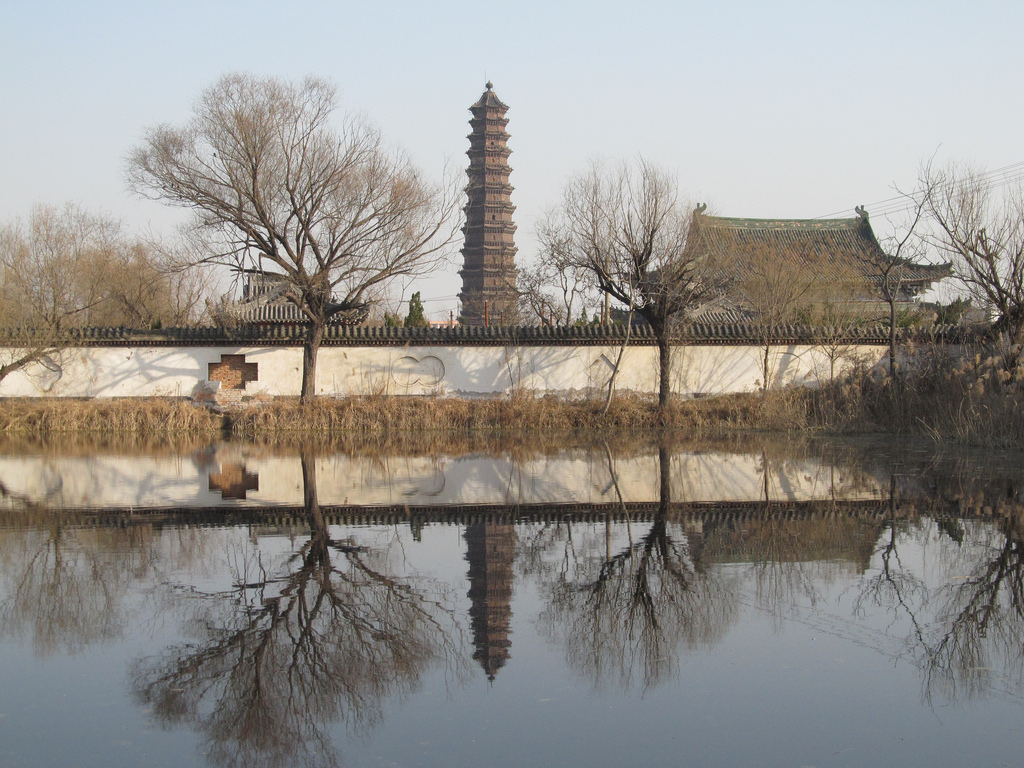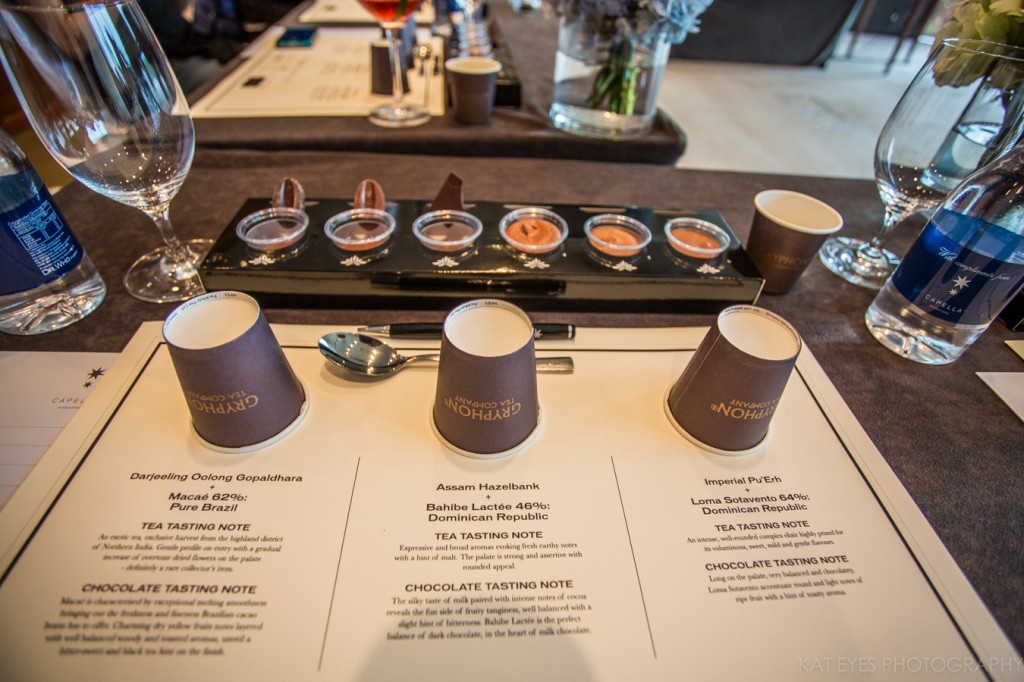
“I may be born in China, but I am Jewish and I hope to return to Israel one day,“ said the genteel-looking Guo Yan, who also goes by the Jewish name of Ester.
Giving a slightly embarrassed smile, she continued, “But I’m still trying to learn Hebrew, so I can understand the Torah (the primary Holy Scripture of Judaism).”
Though she looks indistinguishable from her Chinese neighbours due to her ancestors’ intermarriage with local Chinese, and despite the fact that she grew up in China and holds Chinese citizenship, the slim and bespectacled Ester takes strong pride in her Jewish heritage.
And though she’s only 32 years of age, Ester has taken it upon herself to restore the once-thriving Jewish culture in the central Chinese city of Kaifeng.

Jews in Kaifeng trace their lineage to merchants who had arrived there from Persia, probably around the 11th century.
But hardly anything remains to remind others of the once-flourishing Jewish community in Kaifeng.
In fact, my friend and I would not have met Ester if we had not been persistent enough in trying to find the site of the former Kaifeng synagogue.
The synagogue was destroyed in the 1860s and little remains today save for a well with an iron lid in the boiler room of a nearby hospital.
And Ester’s tiny courtyard house, which sits on the western corner of the former synagogue, had an easy-to-miss sign stating “Here live Kaifeng Jews (The Zhao residence)” on a wall along an alley of courtyard houses.

But this will all change if Ester has her way.
Together with her husband, Ester is trying to raise funds to build a Jewish History Memorial Center on the grounds of the former synagogue, to preserve and showcase Jewish culture in the city.
In a way, the sad decline of the Jewish community in Kaifeng reflects the fortunes of the city they live in – a city that was once the largest and most prosperous city in the world.
Known as one of the great ancient capitals of China, Kaifeng today is built on top of the ruins of several ancient capitals which were buried on top of each other by mud due to flooding at the nearby Yellow River.

Due to strict building laws limiting the height of buildings due to all the ancient cities buried underneath, Kaifeng today is a small and dusty provincial city that’s about an hour’s drive away from the provincial capital, Zhengzhou.
The city is ringed by a much-restored Qing-dynasty wall, within which most of the attractions can be found.

One of them is the Temple of the Chief Minister which was first founded in AD55.
In terms of its architecture and location, it’s not the most stunning temple in China, but it does have one showstopper – a 7-metre tall Four-Faced Thousand Hand Thousand Eye Guanyin statue.
The golden-coloured statue is said to be carved from a single tree over 50 years, and it has probably a thousand hands with an eye in each palm radiating outwards from the main body (I didn’t bother to count them).

A short taxi ride away from the temple is the Iron Pagoda Park which contains a Buddhist pagoda built about a thousand years ago and which is considered as one of the masterpieces of China’s Song Dynasty architecture.
Though named as the Iron Pagoda, the 13-storey pagoda is not made of iron.
It derived its name from the reddish glazed bricks used to build it that made it look like iron from afar.
But that’s not what made the pagoda famous.
Up close, we could see that the pagoda is full of intricate and richly detailed carvings of Buddhas, lions, unicorns, flowers and other figurines.
The pagoda can be climbed for a fee, but we decided to give it a miss as the view from the top is not said to be great.

Just three hours by bus away from Kaifeng, and within the same province, is another one of China’s great ancient capitals, Luoyang.
But even less remained of its glorious past than in Kaifeng.
As the Lonely Planet guidebook puts it, “Luoyang now resembles other fume-laden modern towns in China, with chocking air pollution, roaring streets, incessant concrete and scant evidence of a once-historic citadel.”
My friend and I would concur.

However, Luoyang has one stand-out attraction – the UNESCO World Heritage-listed Longmen Grottoes or Caves.
Though parts of it have been looted and vandalised (especially the section near the entrance), the grottoes still contain over tens of thousands of statues of Buddha and his disciples, ranging from 25millimetres to 17 metres in height, some of which date back to the Northern Wei dynasty, which ruled China from AD386 to 534.
Hailed as one of the greatest repositories of Buddhist art in China, it’s hard not to be awed by the Longmen Grottoes.

Though I’m not an expert in art, much less Buddhist art, it’s obvious that the style of the sculptures varied according to when they were created.
They range from simple, compact designs, to elaborate, three dimensional and lifelike masterpieces.
The largest of the caves feature nine huge statues that are claimed to be the ultimate in architectural perfection of the Tang Dynasty (AD618 to 907).
Each of these statues is carved with different expressions ranging from fearsome to serene, and their expressions were so lifelike that my friend commented that he felt as if the statues were looking down at him.

Back in the provincial capital Zhengzhou, I decided to head to one slightly offbeat location that also harks back to a bygone era – a village that’s known as the last Maoist village in China.
Nanjie Cun (village) is about two hours away by bus from Zhengzhou.
In the mid-1980s, when the rest of China was implementing market reforms introduced by former leader Deng Xiaoping, Nanjie Cun went the other way by collectivising its agricultural production and industry.
Today, it is still run on Maoist egalitarian lines and is a refreshing throwback to how China used to be like just a couple of decades ago.

In this village, there are no commercial advertisements.
Instead, there are banners and billboards extolling the virtues of Maoism.
There is also none of the hustle and bustle of modern China.

For the most part of the two hours that I spent wandering around the factories and blocks of identikit apartments in the village, I was alone.
It felt as if I was walking through a town that has been frozen in time after all its residents fled for some reason or other.

The first sign of life I saw was at the village square where a gigantic white marble statue of Mao Zedong still stands, flanked by huge portraits of Marx, Lenin, Engels and Stalin.
There was a sporting event going on and two teams were engaged in a game of tug-of-war.
It was also there that I met the first and only tourists I was going to meet during my short visit there.

One of them, a man in his 40s who was from neighbouring Anhui Province, said to me, “Interesting place eh? You are probably too young to recall, but China used to be just like that.”
I nodded and replied, “Yes, it’s fascinating.”
Indeed, it was.
But Nanjie Cun is not some modern-day utopia.
Following reports of a severe debt crisis and allegations of corruption among village leaders in 2008, doubts have been raised as to whether Nanjie Cun can continue to pursue its red dreams.
But I’m sure it would, particularly now that it’s become somewhat a tourist attraction.
For just like Luoyang and Kaifeng, the greatest appeal of Nanjie Cun lies in its past – no matter how faded memories of that glorious past might be.













If I may offer a little feedback please: I found the story with Ester and the Jewish community absolutely fascinating and wish you had shared a bit more about this lady’s experiences. I read on and wondered if you were going to return to her later in the story but you didn’t – and perhaps you had attempted to cover too much in one story. You had a fascinating trip and you had more than enough material here for two (maybe even three) posts and it would have been nice to have focused on the Chinese Jewish angle on this post. All in all, a very interesting post and I hope you will accept my feedback 🙂 Thanks for writing.
Hehe.. Thanks for your feedback.. Unfortunately, I’ve ran out of stuff to say about Ester as I didn’t take notes..Didn’t think I was going to write abt her at that point. But yes, fascinating lady.